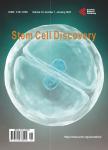The Use of Human Amniotic Membrane for Cartilage Repair: A Sheep Study
The Use of Human Amniotic Membrane for Cartilage Repair: A Sheep Study作者机构:New Mexico Orthopaedic Associates Albuquerque NM USA
出 版 物:《Stem Cell Discovery》 (干细胞探索(英文))
年 卷 期:2015年第5卷第4期
页 面:40-47页
学科分类:1002[医学-临床医学] 100214[医学-肿瘤学] 10[医学]
主 题:Stem Cell Chondrocytes Amniotic Membrane Pluripotent Demineralized Bone
摘 要:Studies show that human amniotic cells’ pluripotentency can be influenced to produce chondrocytes and osteocytes through adding demineralized bone (DMB). Objective: This study evaluates the human amniotic membrane (HAM) mixed with DMB to fill defects in sheep models. We hypothesized this membrane would fill these defects with hyaline-like cartilage with chondrocytes populating the matrix. Design: Six adult sheep were used in this study. One hindquarter knee of each sheep was utilized to make two cartilage defects: one on the femoral condyle and one in the trochlear grove. Three control sheep had unfilled defects. Three sheep received HAM/DMB from a placenta to fill the defects. The membrane was folded so the cellular layer faced the defect and the joint while demineralized bone was placed between the layers. The membranes were fixed to the femur and to the trochlear grove. At six months, the sheep were sacrificed for evaluation. Results: Of the controls, defects did not fill with hyaline or fibrocartilage. In HAM/DMB sheep, 50% of the defects retained the membrane, consistent with other animal models. Membrane defects were examined histologically by a validated scoring system. A strong correlation of little statistical difference between the test and the normal cartilages was observed. The defects that retained membranes had evidence of diffuse chondrocyte-like cell proliferation of stromal matrix similar to hyaline cartilage. Conclusions: HAM/DMB is a potential source of pluripotent cells that can influence chondrogenesis in defects in sheep models. The implications for application in a human model are promising and warrant further study.



